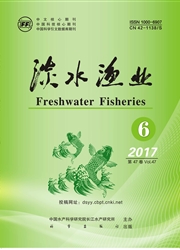

 中文摘要:
中文摘要:
以草鱼(Ctenopharyngodon idellus)为受试动物,研究了硫丹对草鱼红细胞微核及核异常的影响。结果显示:草鱼红细胞微核率、核异常率及总核异常率随硫丹暴露浓度的增加而逐渐上升,呈现较明显的剂量—效应关系。在一定的时间范围内(=96h),各暴露组草鱼红细胞微核率、核异常率及总核异常率均呈现时间—效应关系,但96h后较高浓度组(0.36μg/L、0.71μg/L)红细胞微核率、核异常率及总核异常率随暴露时间的延长并未进一步提高。结果表明,杀虫剂硫丹对草鱼具有潜在的遗传毒性,且毒性效应在特定条件下随暴露浓度的增加或胁迫时间的延长而增强。
 英文摘要:
英文摘要:
The toxic effects of endosulfan were investigated by detecting micronuclei and nuclear anomalies in peripheral red blood cells of Ctenopharyngodon ideUus. The results showed that frequencies of micronuclei, nuclear anomalies and total nuclear anomalies in C. ideUus erythrocytes increased with endosulfan exposure concentrations, showing an obvious dose-response relationship. During a certain exposure period ( = 96 h) , micronuclei, nuclear anomalies and total nuclear anomalies in exposure groups showed a time-effect relationship. After 96 h, prolongation of exposure time no longer led to further increase of micronuclei, nuclear anomalies and total nuclear anomalies in higher concentration groups (0. 36 μg/L and 0. 71 μg/L). These findings indicated that the pesticide endosulfan had a potential genetic toxicity on C. idellus. In general, the genotoxic effects of endosulfan increased with the increasing of exposure concentrations or prolongation of intimidating time under certain exposure conditions.
 同期刊论文项目
同期刊论文项目
 同项目期刊论文
同项目期刊论文
 期刊信息
期刊信息
